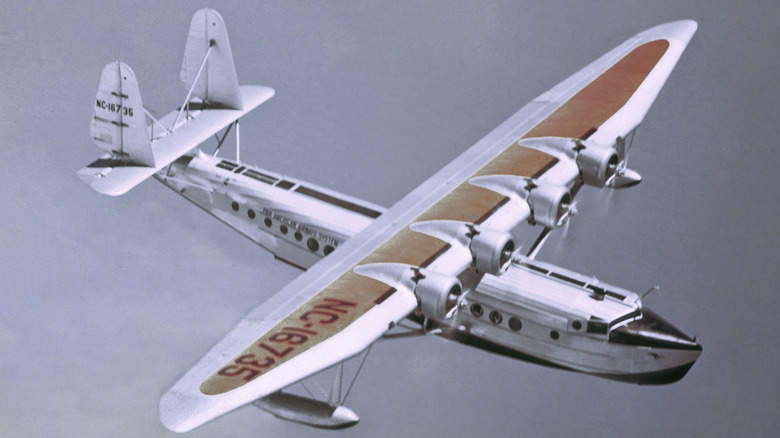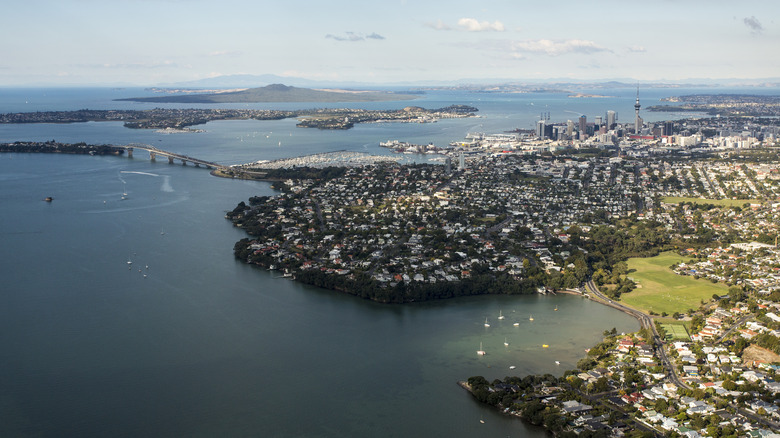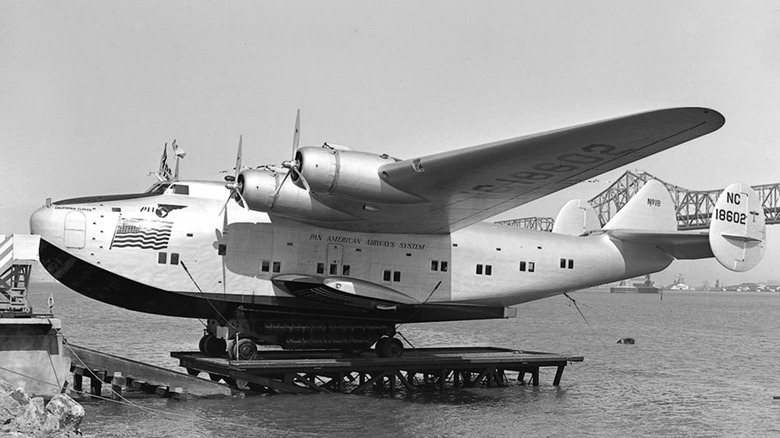The Attack On Pearl Harbor Led To The First Commercial Around-The-World Airline Flight
On the morning of December 7, 1941, swarms of Japanese planes came bearing down on America's Pearl Harbor naval base in Hawaii. They ruined or damaged over 300 airplanes and nearly 20 U.S. ships at the base, according to History, and they killed about 2,400 people.
The attack on Pearl Harbor had several consequences. Most importantly, it drew the U.S. into World War II, which President Franklin Delano Roosevelt had resisted joining up until that point. On the day after the Pearl Harbor attack, Roosevelt went to Congress and asked for a formal declaration of war. According to a transcript of his address to a joint session of Congress (published in 2018 by Time) on December 8, Roosevelt called the attack "a date which will live in infamy" and noted the breadth of the Japanese offensive across the Pacific theater, with attacks on Malaya, Hong Kong, Guam, the Philippines, Wake Island, and Midway Island occurring the same day.
Pearl Harbor has gone down in history both for its pivotal significance in World War II and for the loss of life sustained in the attack. But that event also went down in history for another reason: It precipitated humankind's first around-the-world commercial airline flight.
A binary choice
Pan Am Flight NC18602 — a hulking Boeing 314 flying boat, which was almost the size of today's Boeing 747s — was supposed to fly from Auckland, New Zealand to San Francisco, arriving in California on December 10, 1941. But the attack on Pearl Harbor broke out while the flight was still in the air and en route from Honolulu to Auckland, according to The Washington Post. The events of that day forced the pilot, Capt. Robert Ford, to follow the instructions in a Top Secret letter he'd received before leaving from San Francisco for Honolulu.
The letter made clear that because the Boeing 314 was made up of cutting-edge technology, if the U.S. got drawn into the wider war, the plane's crew members were to deliver it to the U.S. military — or destroy it, killing everyone on board, to prevent the technology from falling into the wrong hands, per The Post.
So the plane emptied of passengers in Auckland, and the Boeing's crew then braced themselves for their task: heading west from Auckland to New York City's La Guardia Airport. They would have to fly over hostile territory and stop to refuel despite having removed most of the plane's markings at the behest of Pan Am, meaning that even allies would suspect the plane of being an enemy force, according to The Post.
A harrowing journey
They landed in Java, in Sri Lanka, in Karachi, and in Khartoum to refuel. When they initially tried to land in Java, they spotted an enemy submarine in the waters below them with crewmen racing toward their deck guns. As they flew over Mecca, men came running out of a mosque and fired guns up into the air toward the plane, per The Washington Post.
Next they landed in what is now Kinshasa in the Democratic Republic of Congo. It was treacherous territory in which to maneuver a plane, dotted with dense jungle and a fast-flowing river. But another daunting stretch of their journey still lay ahead of them: the passage across the Atlantic Ocean to Brazil.
They finished that leg of the trip without incident, and finally, the plane made its way from Brazil to the Caribbean to La Guardia, landing on January 6, 1942 and completing a journey of 209 hours and 31,500 miles, according to The Post. While humans had crossed both oceans and made it around the world in planes before, never had a commercial flight made that journey. Subsequent decades would bring much safer commercial flights across the world, without the threat of enemy gunfire, but the crew of Pan Am Flight NC18602 proved it could be done.


